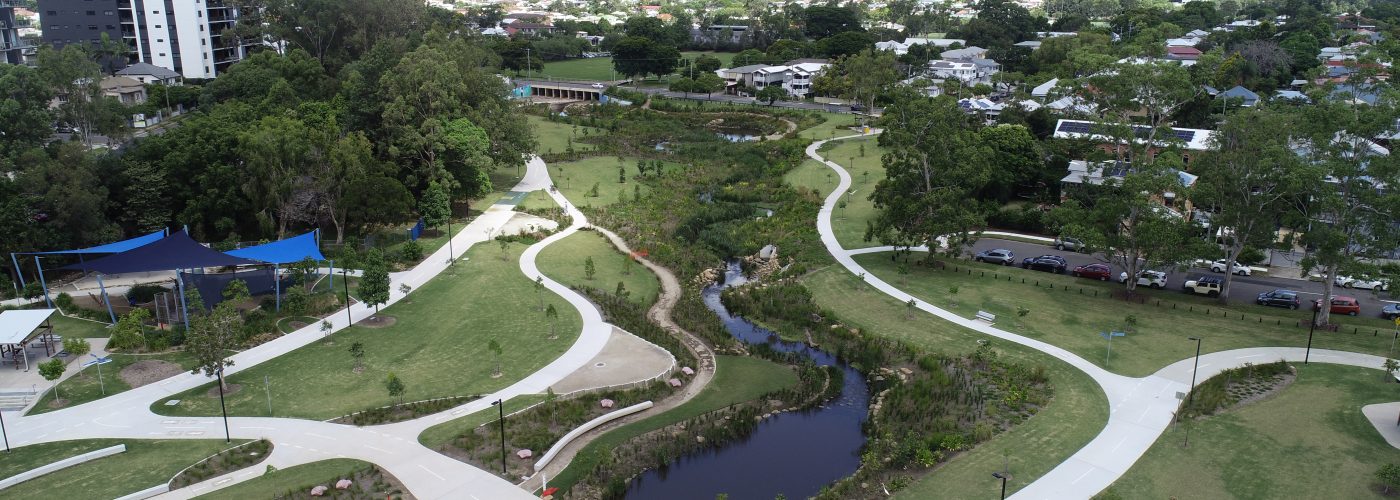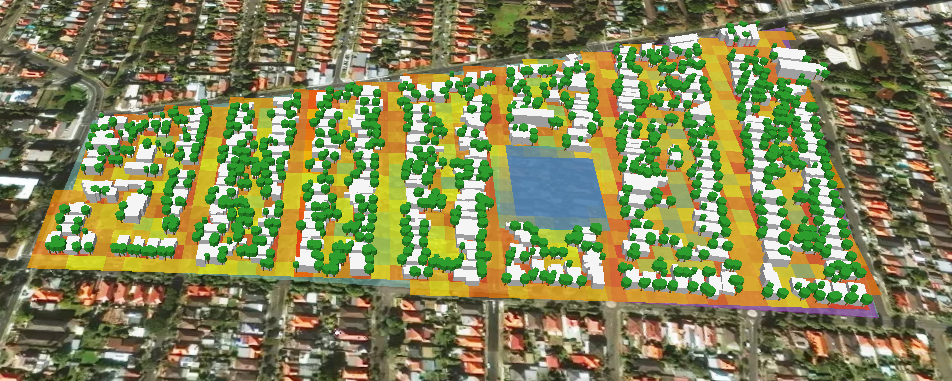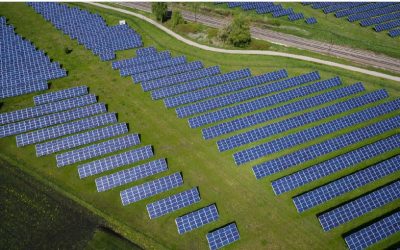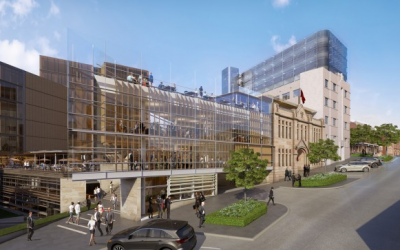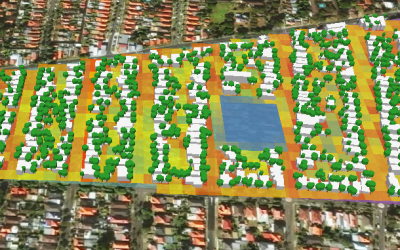Strategies for Cooler Greener Cities
Cities worldwide are experiencing record-breaking temperatures, with consequences for the people’s well-being. Cities are typically much hotter than surrounding countryside, a phenomenon known as the urban heat island effect, and with growing urban populations, expanding cities and climate change, urban cooling is becoming increasingly important consideration in city planning and urban design.
Encouragingly, we now know that with water, greenery and shade we can start to make measurable improvements in cooling our cities.
Bligh Tanner has been leading one of Australia’s most significant urban cooling strategies – the irrigated green grid for the Greater Parramatta and Olympic Peninsula (GPOP) precinct.
This precinct is becoming increasingly important as the geographic heart of Sydney and a major focus for employment, health and education, yet the daytime temperatures can be up to nine degrees hotter than beachside suburbs.
The Irrigated Green Grid imagines a range of green streets that maximise shading, and we have explored a range of decentralised water supply options including sewer mining and stormwater harvesting to provide the irrigation water which is essential to making this work. A cooler and greener precinct is likely to result in a wide range of benefits including increasing walkability, better physical and mental health outcomes, lower air-conditioning use.
‘One degree per tree’ is a basic rule of thumb for cooling benefits, but cooling effects are very localised, you don’t need to move too far from the tree to be back in blistering heat.
As measures are clustered in green streets, parks and green precincts, scale effects can mitigate peak temperatures by up to three degrees. While trees and shade help keep daytime temperatures, research shows that a reduction of impervious surfaces remains critical for reducing night time urban heat.
Recently, Bligh Tanner has become a pioneer in the use of urban microclimate models to examine the effect of various development scenarios. The tools allow us to work with collaborators to visualise the cooling effects of various water-sensitive development strategies. Some of the tools include in-house GIS-driven systems, and there are emerging tools from the Cooperative Research Centre for Water Sensitive Cities that can assist in broader planning. More sophisticated tools developed by the Low Carbon Living CRC provide exciting prospects for urban design professionals to start to optimise cooling outcomes by thinking about building geometry and orientation.
An understanding of urban microclimates and the spatial distribution of urban heat islands helps to create “cool, green and liveable” cities which are resilient to the predicted frequency and intensity of extreme heat events.
In addition to fine-grained irrigated green space (including passively irrigated street trees), other tools we are exploring include cool pavements that reduce heat absorption by increasing permeability and reflectivity. This is important because roads not only get very hot during the day, but they retain that heat overnight.
The GPOP Green Grid project showed the benefits of cooling at the precinct scale. Bligh Tanner is at the early stages of an exciting project exploring how we might apply these principles across Western Sydney – an area forecast to become home to one million extra people and be Australia’s third largest economy. The Western Sydney City Deal envisages this area as a ‘Parkland City’, and urban cooling strategies are going to central to making it a desirable place to live.
If you’d like to have a conversation about this emerging area of research and practice, please contact Alan Hoban.
